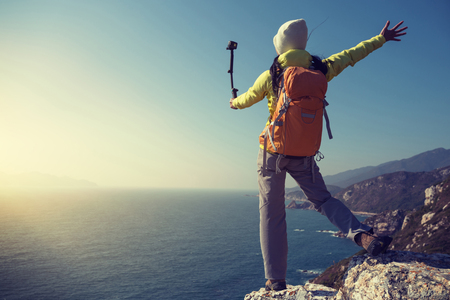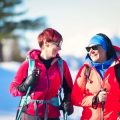1. Understanding Waterborne Hazards in the Wild
If you’re hiking, camping, or backpacking anywhere in the U.S., chances are you’ll need to drink water straight from a river, lake, or even rainfall at some point. But before filling up your bottle, it’s important to know what could be lurking in that clear-looking water.
What’s Really in Natural Water Sources?
Even the cleanest mountain stream can hide invisible dangers. Most natural water sources across the U.S. contain a variety of contaminants that can make you sick. Here’s a quick overview:
| Type | Examples | Potential Health Risks |
|---|---|---|
| Bacteria | E. coli, Salmonella, Campylobacter | Diarrhea, vomiting, stomach cramps |
| Viruses | Norovirus, Hepatitis A, Rotavirus | Nausea, fever, fatigue, liver issues |
| Protozoa | Giardia lamblia, Cryptosporidium | Severe diarrhea (often called “beaver fever”), dehydration |
| Chemical Pollutants | Pesticides, heavy metals (lead, mercury) | Long-term organ damage, neurological problems |
| Sediment & Debris | Dirt, silt, organic matter | May carry other pathogens or clog filters |
Bacteria: The Usual Suspects
Bacteria like E. coli and Salmonella often get into water through animal droppings or human waste. They’re the most common cause of “camp crud”—that miserable stomach bug after a trip.
Viruses: Small but Sneaky
Viruses are less common than bacteria but can show up in areas with lots of human traffic—think popular campgrounds or spots downstream from farms.
Protozoa: Tough to Kill
Giardia and Cryptosporidium are microscopic parasites known for causing nasty bouts of diarrhea that can really ruin your adventure. These guys are tough—they survive many basic purification methods.
Chemicals and Sediment: Not Just a City Problem
Pesticides and heavy metals sometimes wash into streams from nearby farms or old mining sites. While rare in remote locations, they’re still worth thinking about if you’re near civilization.
Why Should Outdoor Enthusiasts Care?
No one wants their hike cut short by an upset stomach or worse. The health risks from drinking untreated water range from mild discomfort to serious illness requiring medical attention. Even if the water looks crystal clear and tastes fresh, contaminants may still be present. That’s why understanding what’s in wild water is the first step to staying safe and healthy on your next adventure.
2. Choosing the Right Site: Sourcing Water Safely
Tips for Identifying the Safest Water Spots in the American Wilderness
When youre out in the wild, finding water is only half the battle—the other half is making sure you choose the safest spot to collect it. Rivers, lakes, and rainwater all have their own risks, especially in American backcountry settings. Here’s how to make smart choices before you start purifying.
What to Look for When Collecting Water
| Water Source | Best Practices | What to Avoid |
|---|---|---|
| Rivers & Streams | – Choose fast-moving sections – Collect upstream from campsites and trails – Go above livestock crossings if possible |
– Stagnant pools or slow-moving water – Areas near beaver dams (risk of giardia) – Downstream of any human activity |
| Lakes & Ponds | – Gather water away from shore (use a cup or bottle on a stick) – Look for clear areas without visible algae or debris – Early morning collection can be best, before stirring up sediment |
– Green scum or lots of floating plant matter – Shallow, muddy edges – Near campsites or animal tracks |
| Rainwater | – Collect directly as it falls using clean containers – Use tarps or wide surfaces to gather more efficiently – Filter through a cloth if collected from leaves or rocks |
– Don’t use water that’s pooled on the ground – Avoid runoff from roofs (may contain contaminants) |
Considerations for American Wilderness Areas
- Avoid agricultural runoff: In areas near farms or ranches, rivers and lakes may carry pesticides and fertilizers—try to source water well upstream of any such activity.
- Wildlife contamination: Be aware of animal activity. Large mammals like deer and elk often drink at certain spots; avoid these areas if possible to lower the risk of pathogens.
- Human impact: Popular trails and campsites mean higher risk of contamination. Try to hike a bit further off the beaten path when sourcing your water.
- Altitude matters: Higher elevation sources tend to be cleaner because there’s less human and animal activity.
- Seasonal effects: During spring runoff, rivers may look clean but can carry heavy sediment and bacteria from snowmelt—always treat before drinking.
Quick Reference: Safe Sourcing Checklist
- Is the water moving? (Moving is usually safer than still.)
- Is it clear, with no visible debris or algae?
- Is it away from signs of animals or humans?
- If collecting rainwater, is it direct from the sky—not pooled or running off dirty surfaces?
- If in doubt, always purify—even “clean-looking” sources can hide dangers!

3. Boiling and Filtration: Reliable Purification Basics
Step-by-Step Guide to Boiling Water
Boiling is one of the oldest and most trusted ways to make river, lake, or rainwater safe to drink in the U.S. Whether you’re camping in the Rockies or backpacking in the Appalachians, here’s how to do it right:
- Collect Water: Gather water from as clean a source as possible. Avoid areas with lots of sediment or obvious pollution.
- Pre-filter (if needed): If the water is murky, pour it through a bandana or coffee filter to remove debris.
- Bring Water to a Rolling Boil: Using your camp stove or fire, heat the water until you see big, rolling bubbles.
- Boil for at Least 1 Minute: At sea level, boil for 1 minute; if you’re above 6,500 feet (2000 meters), boil for 3 minutes due to lower boiling points at higher altitudes.
- Cool and Store: Let the water cool before transferring it to a clean bottle or hydration bladder.
Popular Boiling Gear for American Hikers
| Gear | Description | Why Its Popular |
|---|---|---|
| Jetboil Flash Cooking System | Compact all-in-one stove for fast boiling | Quick, fuel efficient, easy to pack |
| MSR PocketRocket 2 Stove | Tiny canister stove that fits in your palm | Lightweight, reliable, great for solo trips |
| Stanley Adventure Camp Cook Set | Stainless steel pot with two cups included | Durable, budget-friendly, easy for groups |
How to Use Portable Filters Effectively
If boiling isn’t practical—like when you’re on the trail and need a quick drink—portable water filters are a favorite among American backpackers. Here’s how to use them step by step:
- Select Your Filter: Choose a model that suits your trip (see gear recommendations below).
- Scoop Water: Collect water from as clear a spot as possible.
- Assemble the Filter: Follow manufacturer instructions—usually this means attaching hoses or screwing onto a bottle.
- Pump or Squeeze: Pump water through the filter into your clean container, or squeeze if using a soft-bottle system.
- Clean Up: Backflush or rinse your filter according to the directions to keep it working well.
Recommended Portable Filters in the USA
| Filter Model | Description & Features | User Benefits |
|---|---|---|
| Sawyer Squeeze Filter System | Squeeze-style filter fits most bottles and pouches; removes bacteria and protozoa; super lightweight (3 oz) | No pumping required; perfect for thru-hiking; highly durable and affordable |
| KATADYN BeFree Water Filtration System | Squeezable soft flask with integrated filter; filters up to 1 liter per minute; compact design (2 oz) | Extremely fast flow rate; great for trail runners and ultralight backpackers; easy cleaning by shaking/swishing |
| Pump-style MSR MiniWorks EX Microfilter | Pump-action ceramic filter; threads directly onto wide-mouth Nalgene bottles; field-maintainable | Tough construction; great for larger groups or extended trips; reliable even with silty water |
TIPS FOR BEST RESULTS:
- If possible, combine filtration with chemical treatment (like iodine tablets) if you suspect viruses may be present.
- Avoid collecting water downstream of campgrounds, cattle pastures, or other obvious contamination sources.
- No matter which method you choose, always store purified water in clean containers to prevent recontamination.
4. Chemical Treatments: Pros, Cons, and Proper Usage
Chemical treatments are a popular way to purify river, lake, or rainwater when hiking or camping in the U.S. These methods use chemicals like iodine or chlorine dioxide tablets to kill bacteria, viruses, and parasites. Here’s what you need to know to use them safely and effectively.
Common Chemical Purification Options
| Chemical Type | How It Works | Time Needed | What It Kills | Taste Impact |
|---|---|---|---|---|
| Iodine Tablets/Drops | Releases iodine that destroys microbes | 30-60 minutes (longer if water is cold/cloudy) | Bacteria, viruses; some protozoa (not Cryptosporidium) | Can leave a noticeable taste and color |
| Chlorine Dioxide Tablets/Drops | Kills microbes through oxidation | 30 min for bacteria/viruses, 4 hours for protozoa (Giardia, Cryptosporidium) | Bacteria, viruses, most protozoa (including Cryptosporidium) | Milder taste than iodine |
Pros and Cons of Chemical Treatments
| Pros | Cons |
|---|---|
| – Lightweight and easy to carry – Simple to use – Effective against most waterborne pathogens – Great backup method for hikers and backpackers |
– Waiting time required before drinking – Some chemicals don’t kill all protozoa – Not ideal for people with thyroid issues (iodine) – Can change water taste – Less effective in very cold or cloudy water without pre-filtering |
Culturally Relevant Advice and Safety Notes
- Read the label: Follow manufacturer instructions carefully for dosage and wait times—don’t guess!
- If you’re pregnant or have thyroid problems: Avoid iodine-based products—opt for chlorine dioxide instead.
- Picky about taste? Bring flavor packets (like those used by American backpackers) to mask chemical flavors.
- Use as a backup: Many outdoor enthusiasts in the U.S. use chemical treatments as a backup to filters or boiling, especially on multi-day trips where gear weight matters.
- Pre-filter murky water: If your source is cloudy, pour it through a bandana or coffee filter before adding chemicals. This makes purification more effective.
- Be patient: Don’t rush the process—even if you’re thirsty. Give the chemicals enough time to work for safe drinking.
- No “one size fits all”: Choose your method based on your health needs, trip length, and local risks. Most American hikers carry both a filter and chemical backup just in case.
5. Advanced Gear and Emergency Hacks
High-Tech Water Purification: UV Light Purifiers
UV light purifiers are a game changer for backpackers and outdoor adventurers in the U.S. These handheld devices use ultraviolet light to destroy bacteria, viruses, and protozoa in water. Theyre lightweight, fast (usually less than two minutes per liter), and don’t leave any aftertaste. Simply fill your bottle with clear water, stick the device in, and let the UV do its thing. Just make sure your water is clear—UV won’t work well if the water is muddy or cloudy.
Popular UV Purifier Brands in America
| Brand | Weight | Battery Type | Average Price (USD) |
|---|---|---|---|
| SteriPEN | ~5 oz | Rechargeable/AA Batteries | $80–$100 |
| Lifestraw UV Bottle | ~10 oz | Rechargeable | $50–$70 |
| PURIBAG Portable UV System | ~7 oz | Rechargeable/USB | $90–$120 |
Water Purification Tablets: Small but Mighty Solutions
Pills and tablets are a classic choice for American hikers and hunters who want something ultra-lightweight in their pack. Most tablets contain either iodine or chlorine dioxide, which kill off most harmful organisms. They’re super easy to use: just drop one or two into your bottle, wait 30 minutes (sometimes up to 4 hours for tougher parasites), and you’re good to go. Keep in mind that some tablets can leave a chemical taste, so flavored electrolyte powders can help mask it.
Common Tablet Types & Wait Times
| Tablet Type | Main Ingredient | Wait Time |
|---|---|---|
| Aquamira Tablets | Chlorine Dioxide | 30 min – 4 hrs |
| Potable Aqua Tablets | Iodine | 30 min – 1 hr |
| KATADYN Micropur MP1 Tabs | Chlorine Dioxide | 30 min – 4 hrs |
Emergency Survival Techniques: Backcountry Know-How in the U.S.
If you find yourself without gear, American outdoors wisdom says: improvise! Here are a few tried-and-true methods:
- Boiling: Bring water to a rolling boil for at least one minute (three minutes above 6,500 feet). It’s simple but requires a fire or stove.
- D.I.Y. Filter: Use a bandana or t-shirt layered over a bottle to strain out debris before boiling or adding tablets.
- Solar Disinfection (SODIS): Fill a clear plastic bottle and set it in direct sunlight for six hours; the sun’s UV rays will help kill many pathogens (best as a last resort).
- Makeshift Charcoal Filter: Layer sand, charcoal from your campfire, and small stones in a bottle; pour water through before boiling or treating chemically.
Packing Tips: Stay Prepared on Any Trail
- Always carry backup purification options—at least two different methods.
- Tuck extra tablets or a mini filter in your first aid kit.
- If you’re heading into remote American wilderness, check for local water advisories before you go.
- A small metal pot is worth its weight for boiling emergencies.
- Laminated instruction cards for emergency methods can be a lifesaver if you’re new to backcountry travel.
This mix of modern gear and classic outdoor hacks keeps you safe wherever you roam in the wilds of America!


